The choice of installation and manufacture of foam blocks at home
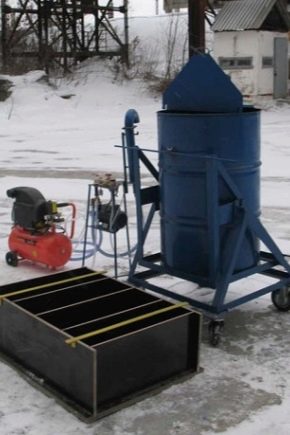
Foam concrete is a very popular material for low-rise construction. In addition to industrial production, it is also made independently. The release of blocks of different types can be a profitable business. However, the production of foam blocks at home has a number of features. Before buying the necessary unit, you need to have an idea about the features of the material itself, the correct choice of accompanying tools, as well as the consumption of the mixtures used.
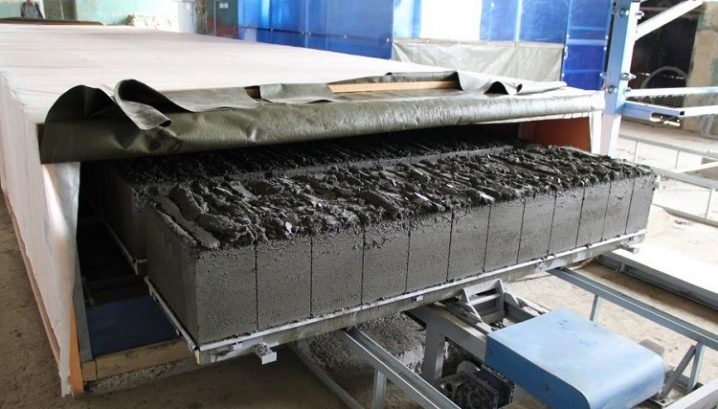
Material features
Foam blocks are made from a mortar, which includes:
- sand;
- Portland cement;
- foaming agent (foam concentrate);
- water.
In this case, the bulk density of foam concrete can be different. In fact, it is concrete with a cellular structure. It is formed by a mass of closed air bubbles. This feature determines the low density, as well as the thermal conductivity of the material. At different densities, foam blocks can be used as heat-insulating, structural-heat-insulating and structural materials with low thermal conductivity.
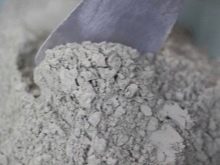
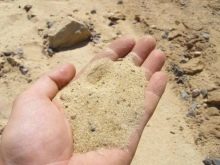
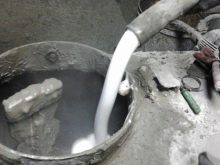
As a rule, it is by the brand of foam concrete that the level of its density is determined. The lower it is, the less mixture was used to make the material. This fact is reflected in the cost price (foam concrete is cheaper than concrete). However, with a relatively low density, it is considered an advantageous material when erecting partitions inside the house.
The foam block is easy to process, it can be cut with a typical hacksaw. In addition, it does not collapse when nails are driven into it. In work, it resembles wood, in shape it is a rectangle. Blocks can be of different sizes: from standard elements to very large ones.
Homemade foam concrete has the dimensions that are determined by the shape of the purchased unit.
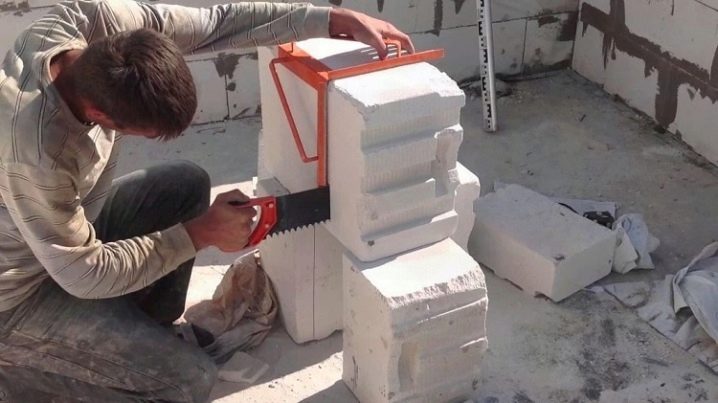
Advantages and disadvantages
Foam concrete has many advantages, thanks to which it is in demand in the construction industry. This material practically does not change its quality and performance characteristics over time, it is not subject to aging. Environmental friendliness makes it harmless to the health of the manufacturer, builders and households. It does not emit toxic substances into the air, it is considered durable and reliable, and guarantees good thermal insulation.
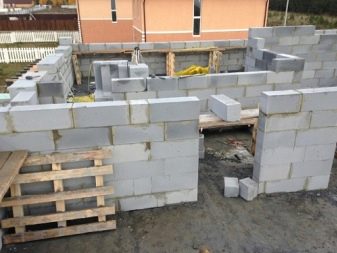

In addition, it possesses high soundproofing properties, reduces the noise level, which is important for a modern person. The foam block is inert to fire. It is able to stabilize the temperature background indoors, is easy to install, and also has a high production profitability. Due to its low weight, it does not create a colossal load like concrete. This allows you to reduce costs when installing the foundation.
However, along with the advantages, foam concrete also has disadvantages. For example, despite the fact that it is considered durable, it loses to concrete and reinforced concrete. Other nuances include the fact that the foam block does not work in bending. It is also unstable to moisture, since it is able to absorb it from the environment.
Regardless of whether the material is produced in production or at home, it will shrink.
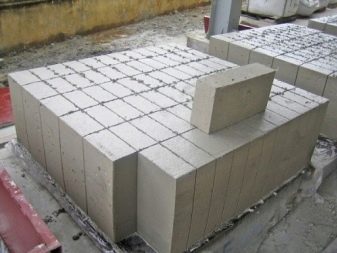
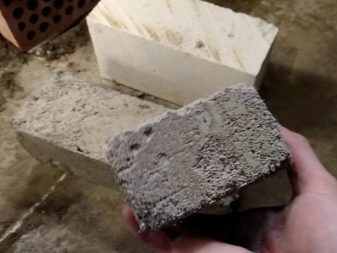
Equipment and tools
When making foam blocks at home you may need the following equipment and accessories:
- feeder for cement and sand;
- foam generator with a capacity of at least 200 l / min;
- baro installation;
- used water dispenser;
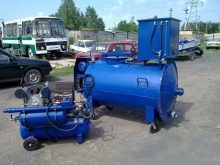

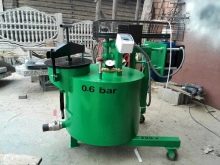
- vibrating screen (raw material sifter);
- ready mix outlet hose;
- compressor;
- concrete mixer with a volume of at least 250 liters;
- special forms for blocks or a cutting machine.
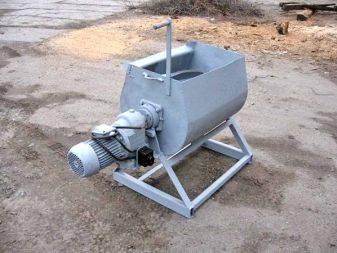

It will not be difficult to buy the necessary equipment for the production of building materials at home today. If desired, you can purchase not only a complete production line, but also its individual components. It is worth considering that equipment for the production of foam blocks at home is not only stationary, but also portable. The line can be conveyor or automated. These factors determine the cost of the purchased equipment.
At the heart of any set of equipment is a foam generator. Such a device per day can provide the release of about 100-110 cubic meters of material. A distinctive feature of stationary lines is their high productivity along with excellent quality and low cost. Considering that such a kit will cost about 1.5 million rubles, this calls into question its purchase.
A mobile foam concrete plant does not require the purchase of an expensive foam generator, which makes it in demand in the construction market. However, along with this, it cannot boast of high performance. As a rule, in this case, a pressure setting is used, but with all its power, it is not capable of producing more than 40-45 cubic meters of finished material per day.
In this case, ready-made blocks are often created with a high consumption of foaming agents.
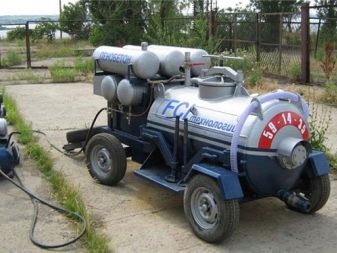
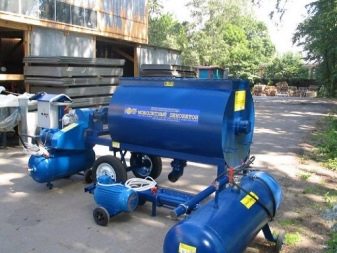
Their strength is inferior to analogs created on stationary lines. The price of a complete set for home production can vary from 50 to 300 thousand rubles. At the same time, as a rule, high-power equipment has a high cost. For example, a set for 300,000 rubles can give about 72 cubic meters of foam concrete per day.
An automatic line needs large areas, which is often problematic, because it was not provided initially. Typically, such lines require the creation of bins for cement, water, sand, as well as additives with automatic dosage. In addition, it is necessary to think about the areas for drying foam concrete, pouring it into shapes, as well as installation for cutting. This equipment is capable of producing, on average, about 80-100 cubic meters of material per day, but not everyone can afford such a luxury, because the set will cost from 1.5 to 3 million rubles.
When at the initial stage there is not enough money, they buy used equipment. However, in this case, you should be prepared for the fact that some parts may need to be replaced quickly enough.
In addition, you need to understand that the equipment that was in operation can cause the poor quality of the finished foam concrete.
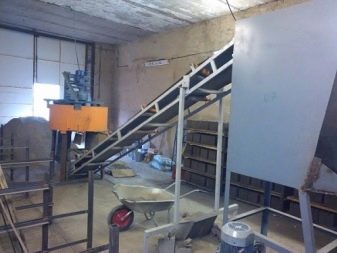

The forms purchased for foam concrete can be different. Today they are made from steel, plywood, and plastic. The capacity of products is different, for example, you can buy plastic molds with dimensions of 390x190x288 mm, plywood options with dimensions of 588x300x188 mm, steel counterparts with dimensions of 600x300x200 mm. When buying them, it is important to take into account the rigor of the geometry, since the quality of the finished material will directly depend on this. Even the slightest violation of symmetry is unacceptable.
When choosing forms for pouring foam concrete mass, you should pay attention to the material of their manufacture. Considering that the formwork can be combined, this is especially important. For example, if the seller notes that the metal version with heavy-duty plastic inserts can withstand even the highest temperatures, you should not blindly trust this.
The fact is that such forms are actually short-lived. In the process of drying and hardening of the foam concrete mass, a large amount of heat will be released.
Plastic, no matter how high quality it is, reacts to an increase in temperature.
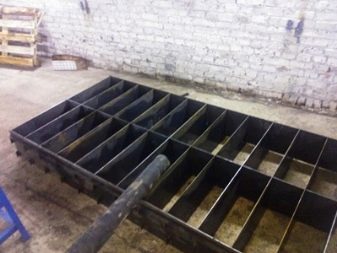
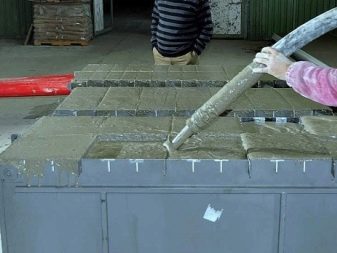
Consumption and proportions of the mixture
The proportions of the constituent ingredients in the manufacture of foam concrete are as follows: for 320 kg of cement (for example, M500 brand) 420 kg of sand, 45 liters of water to obtain foam and 120 liters of water for the solution are taken. As for the foaming agent, its consumption depends on a specific brand. Usually, for such a volume, it is used in the range of 1.2-1.5 kg. Water for production can be taken not only from tap water, technical water of moderate hardness is also suitable.
The recipe and proportions directly depend on the density of the foam concrete, which must be obtained in the end. For example, if you need the bulk density of D 600 foam blocks, take 210 kg of sand, 310 kg of cement, 110 liters of water for mortar and 54 liters for diluting the foam. In addition, 1.3 kg of foam concentrate and 715 liters of foam are the building blocks. When mixing the entire amount of components, a wet mass of 685 kg is obtained.
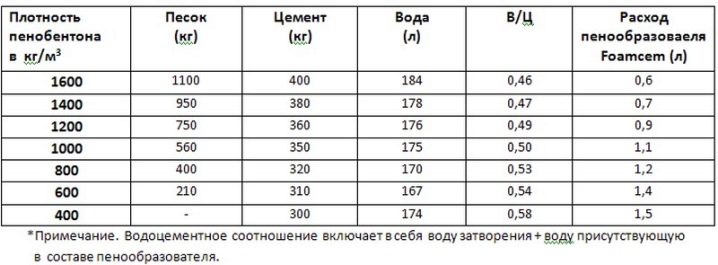
When a high density is needed (for example, 1000 kg per m3), aerated concrete mass is made from 590 kg of sand, 350 kg of cement, 120 liters of water in solution, 42 liters - in foam. For such a recipe, no more than 1 kg of foam concentrate and 560 liters of foam are used. As a result, in the latter case, the mass of raw materials for producing foam blocks will be 1103 kg.
It is important to monitor the homogeneity of the resulting foam and solution. This will increase the quality characteristics of the finished material. When choosing the desired recipe, it should be borne in mind that according to the current GOST, the shrinkage of the finished material should not exceed 3 mm per 1 sq. m.
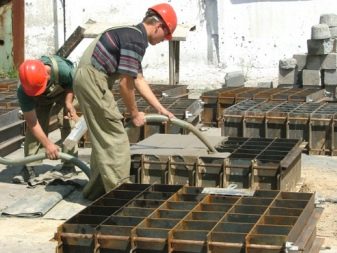

How to do it?
The production of foam blocks at home is performed in two ways: casting and sawing. The classic do-it-yourself manufacturing technology involves the use of special cassette-type forms with removable partitions and sides for dividing the total capacity into separate sections of the same size. In such forms, the solution dries and hardens, after which the finished foam concrete is removed. The main advantage of this method of manufacturing building material is the fact that the monolithic block does not need to be cut.
This eliminates the need to purchase a sawing machine, which reduces equipment costs. However, it is the shape that can cause the violation of strict geometry. After hardening, not all elements poured into the mold will be perfectly even, even when buying an expensive fixture. There will be a marriage in any case, and this is an extra expense of the mixture used.
In order to prevent the destruction of foam blocks, it is necessary to use a special lubricant that decomposes in the open air within several days.
Such substances are not cheap, however, if they are not used, this can cause chips or cracking of foam blocks.
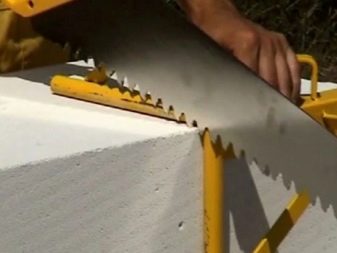
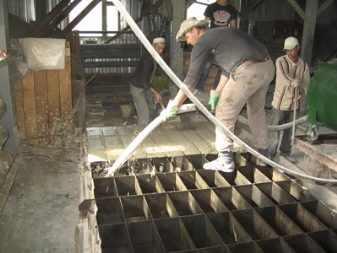
Most often, sawing technology is used in home production. In this case, one large mold is first poured, which is then cut into separate elements of a given size. For this method, a sawing machine is bought. Although it will require some financial investment, profitability will increase. The advantages of this method are the strict geometry of each element, as well as minimizing the formation of chips at the edges of the foam blocks.
However, this technique can hit the wallet well, since special equipment is needed to produce small workpieces, and it is expensive. In addition, cutting the monolithic slab into small pieces increases the time it takes to produce the material.
The cutting machine comes in two varieties. In the first case, this is a unit on which the monolithic material is cut immediately after it has hardened (deformed). This is convenient in that you do not need to transfer the entire board to the sawing machine, thereby reducing labor costs and time. Foam blocks are cut using special strings characterized by high cutting accuracy.
The disadvantages of these cutting elements are their fragility, as well as a decent cost.
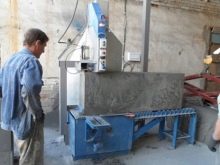
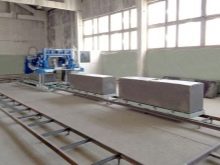

The second type of cutting equipment requires the transfer of a foam concrete monolith for cutting. In this case, it has to be cut with disc-type blades. Unlike strings, such knives are durable, and the units themselves are economical to maintain. However, transferring foam concrete slabs to them, to put it mildly, is inconvenient and troublesome.
Curing of foam blocks can be carried out in two ways: natural and autoclave. At the same time, the elements dried by the second method have the best quality characteristics. So it is possible to create the most favorable conditions for obtaining a good building material. However, the price of such equipment significantly hits the pocket, therefore, when it is produced in small volumes, it is not bought.
Self-drying foam concrete dries better in summer. As a rule, if the temperature in the room is below zero during drying, you have to cover the formwork or think over the creation of special chambers for steaming foam blocks. In the first case, polyethylene or industrial batting is usually used. In the second, a room inside the production workshop is allocated for these needs.
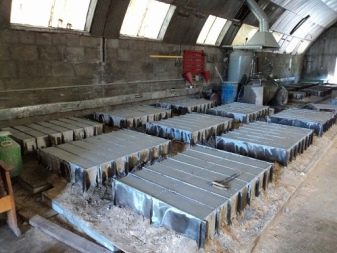
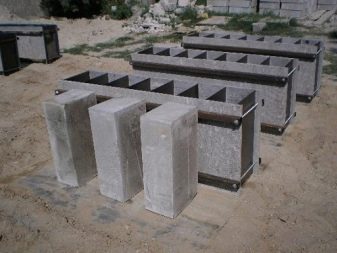
In such a room, a special temperature regime is created, taking into account the necessary humidity for uniform and correct hardening of the blocks. Often, steam generators are used for these purposes, thus trying to automate the work process. When there is no extra money, but you do not want to increase the drying time of foam blocks, they resort to different budget options for solving this problem. Someone puts buckets of water in the chamber, in another case, communications with gas heating are carried out into it.
Those who are not satisfied with these solutions enclose a certain part of the production hall with any available material that is notable for an acceptable price. For example, old bricks, profiled sheets or even the same foam blocks are used as a fence. When steaming the chamber with gas, it is necessary to take into account the optimality of the selected mode. Ideally, the humidity in the room should not be less than 65%. However, if the production does not provide for the purchase of specialized equipment in the form of a heat and humidity chamber, this may affect the certification of the finished material.
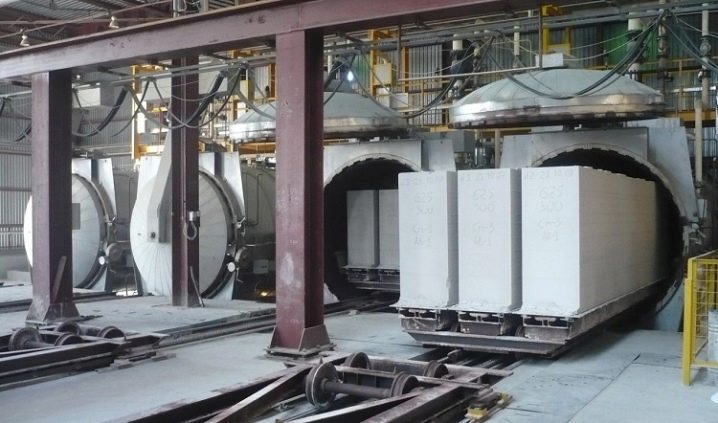
Manufacturing technology
The standard technology for making foam concrete blocks at home consists of several operations.
- Initially, a foam concentrate is prepared in a separate container. Then it is combined with water and sent to a steam generator. If at the disposal of independent production there is a cavitation unit that foams the contents by means of ultrasound, this stage is skipped.
- The next step is to make a mixture for foam concrete. For this, the necessary components of the mixture and special additives are placed in the mixer chamber. After that, the chamber is filled with the previously prepared foam. According to the rules of technology, mixing in the chamber takes place within a few minutes.
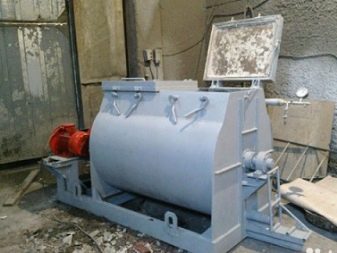

- If a cavitation unit is used in production, initially, a foaming agent is placed in the chamber for mixing... In this case, the remaining components of the working solution are placed later. In this case, the stirring time should not exceed 0.5 minutes. At this stage, the solution is ready for pouring.
- After stirring, the composition is poured into the existing forms. To prevent the mass from sticking to the surface of the equipment, the places of contact are pre-lubricated with machine oil or a special lubricating fluid. It is desirable that the temperature in the room during solidification and hardening of the composition is at least +20 degrees ° C. After about 8-10 hours, foam concrete will gain one quarter of its strength.


This is the best time to cut it, taking into account the required dimensions, as well as packaging. Elements gain final strength after 28 days from the moment of their manufacture. Tempering strength is considered to be a third of the specified one.
The goods can be sold in two days.
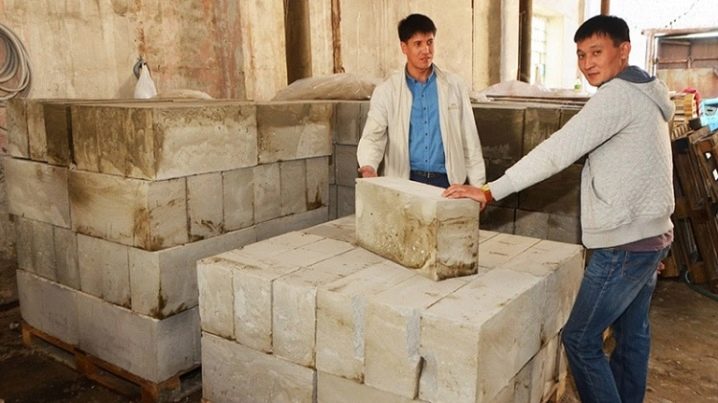
What to consider?
Sometimes it may seem that it is much easier to independently manufacture equipment for the production of foam blocks, using basic knowledge, power calculation and drawings, which today will not be difficult to find on the Internet. However, in fact, it is worth considering: the manufacture of foam concrete in a home mini-plant does not allow inaccuracies, since its benefits depend on this. You need to understand that in extreme cases, the factory product will not be difficult to sell in the future as unnecessary, while homemade products will remain unclaimed.
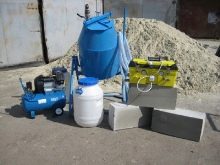
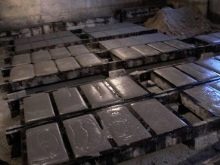
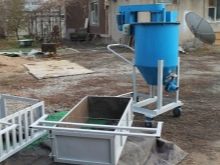
For the production of foam blocks, Portland cement of the M 500 brand is used. To improve the quality characteristics of finished elements, various additives are added to it. For example, using the "Bio NM" modifier, you can improve the frost resistance of foam blocks. Due to the additives "Bio-Lux" and Laston, it is possible to increase the concentration of air in the structure of the material.
In order for the finished material to have excellent thermal insulation properties, an industrial-type foaming agent must be purchased for its manufacture. No matter how much you want to save money and make it yourself, it will not have heat retention rates similar to the option made in production.
It is also important that high-quality raw materials are the basis of a high-quality foam block.
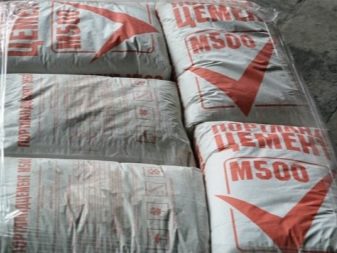

You can find out instructions for making foam blocks at home by watching the video below.













The comment was sent successfully.